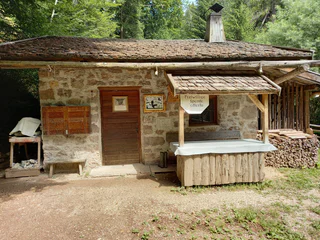
1/5
Wine educational trail Algund/Lagundo
Velloi/Vellau, Algund/Lagundo, Meran/Merano and environs
Všude v prázdninových regionech Jižního Tyrolska jsou vyznačeny tematické procházky, speciální objevitelské trasy pro malé i velké. Například v jihotyrolském Unterlandu mohou návštěvníci na podzim zažít, jak se hrozny dostanou z vinné révy do sudu. V San Valentinu v Campo/Gummeru můžete prozkoumat vesmír a naši sluneční soustavu a v Terlanu/Terlanu pěstitelé chřestu předvedou, jak se na jaře získává ze země vzácný chřest. Celkem na návštěvníky Jižního Tyrolska čeká více než 150 značených a poučných tematických procházek.

1/5
Velloi/Vellau, Algund/Lagundo, Meran/Merano and environs

Stelvio/Stilfs, Stilfs/Stelvio, Vinschgau/Val Venosta

1/3
Aldino/Aldein, Aldein/Aldino

Chiusa/Klausen, Klausen/Chiusa, Brixen/Bressanone and environs

Pochi/Buchholz, Salorno/Salurn, Alto Adige Wine Road

1/3
San Vigilio, Al Plan/San Vigilio, Dolomites Region Kronplatz/Plan de Corones

1/3
Rina/Welschellen, San Martin /San Martino, Dolomites Region Kronplatz/Plan de Corones

1/7
Plars di Mezzo/Mitterplars, Algund/Lagundo, Meran/Merano and environs

1/3
Pietralba/Weissenstein, Deutschnofen/Nova Ponente, Alto Adige Wine Road

Chiusa/Klausen, Klausen/Chiusa, Brixen/Bressanone and environs

S. Candido/Innichen, Toblach/Dobbiaco, Dolomites Region 3 Zinnen

1/3
San Leonardo i.P./St. Leonhard i.P., St.Leonhard in Passeier/San Leonardo in Passiria, Meran/Merano and environs

Quadrato/Quadrat, Partschins/Parcines, Meran/Merano and environs

Monguelfo/Welsberg, Welsberg-Taisten/Monguelfo-Tesido

Villa Ottone/Uttenheim, Gais, Dolomites Region Kronplatz/Plan de Corones

1/3
Soprabolzano/Oberbozen, Ritten/Renon, Bolzano/Bozen and environs

Acereto/Ahornach, Sand in Taufers/Campo Tures, Ahrntal/Valle Aurina

1/6
Mazzon/Mazon, Neumarkt/Egna, Alto Adige Wine Road

1/2
La Val/La Val, La Val, Dolomites Region Alta Badia

1/5
Albion/Albions, Lajen/Laion, Dolomites Region Val Gardena

Laces/Latsch, Latsch/Laces, Vinschgau/Val Venosta

Mules/Muls, Sarntal/Sarentino, Bolzano/Bozen and environs

1/4
San Leonardo i.P./St. Leonhard i.P., Moos in Passeier/Moso in Passiria, Meran/Merano and environs

1/2
Issengo/Issing, Pfalzen/Falzes, Dolomites Region Kronplatz/Plan de Corones

1/2
San Vigilio, Badia, Dolomites Region Alta Badia

1/2
S.Valentino /St. Valentin, Graun im Vinschgau/Curon Venosta, Vinschgau/Val Venosta

1/10
La Val/La Val, San Martin /San Martino, Dolomites Region Kronplatz/Plan de Corones

1/5
S. Giacomo/St. Jakob - Val di Vizze/Pfitsch, Pfitsch/Val di Vizze, Sterzing/Vipiteno and environs

San Pancrazio/St. Pankraz, St.Pankraz/San Pancrazio, Meran/Merano and environs

Monteponente/Pfeffersberg, Brixen/Bressanone, Brixen/Bressanone and environs